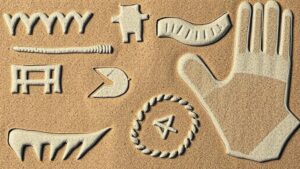Recognizing Patterns in Clues That Repeat Across Multiple Treasure Sources
Recognizing Patterns in Clues That Repeat Across Multiple Treasure Sources
Treasure hunting has been a captivating pursuit across cultures and centuries, drawing enthusiasts from all walks of life. The discovery of treasure often relies on interpreting clues effectively. Recognizing patterns in those clues that repeat across multiple sources can significantly enhance success rates. This article explores the methodologies and strategies for identifying these recurring patterns, supplemented with examples and case studies.
The Importance of Pattern Recognition
Pattern recognition is a cognitive process whereby the brain identifies and understands recurring themes, shapes, or information within data. This process is pivotal in treasure hunting, as clues can often be fragmented or cryptic. By recognizing patterns, hunters can consolidate information to form a clearer picture, allowing them to strategize their next moves effectively.
For example, consider the legends surrounding the Lost Dutchman Gold Mine in Arizona. Various accounts mention a cursed mountain and three gold markers. By analyzing different stories and reports, enthusiasts have been able to correlate geographical features and establish probable locations where the mine might be situated. The shared themes of markers and a curse across separate sources provide a framework for further exploration.
A critical step in recognizing patterns involves looking for repeating themes or symbols in multiple treasure accounts. These motifs can serve as essential guides in the hunt. Symbols might include specific wildlife, celestial bodies, or geographical landmarks.
- Wildlife: Clues involving certain animals can vary in meaning. For example, the frequent mention of an owl might suggest a lookout point or an area known for hidden treasures, given that owls traditionally signify wisdom and stealth.
- Celestial Bodies: Stars or constellations mentioned in clues can indicate cardinal directions, which are crucial for pinpointing locations. Many pirates, for instance, used the North Star for navigation, and clues involving it often point to locations due north.
Historically, some treasure maps have incorporated motifs based on local cultures. Beale Ciphers, for example, allegedly detail the location of a buried treasure in Virginia. The symbolic references within these ciphers, when cross-referenced against historical accounts or local lore, reveal crucial insights that can guide treasure hunters.
Utilizing Technology for Deeper Analysis
In modern treasure hunting, technology plays an indispensable role in recognizing and analyzing patterns. Geographic Information Systems (GIS), for example, can digitally compile various clues and legends, allowing hunters to visualize potential treasure hotspots more effectively.
Also, tools like data mining software can analyze text from different sources to automatically identify similarities in wording, themes, and symbols. For example, a study analyzing hundreds of treasure legends found notable trends in the usage of certain phrases and geographical markers, significantly narrowing down search areas.
Real-World Case Study: The Oak Island Mystery
The Oak Island mystery is another instructive case in recognizing patterns within treasure hunting. Since the 18th century, various treasure seekers have attempted to uncover what is believed to be a hidden treasure on Oak Island in Nova Scotia. Over the decades, explorers have unearthed numerous artifacts that share a common theme: man-made structures and sophisticated means of water diversion.
Many accounts repeat the notion of layers–whether through booby traps or pits–leading to the inference that the treasure is well-guarded and sophisticatedly concealed. By applying pattern recognition, treasure hunters have focused their search on the “Money Pit” area, which has become synonymous with the pursuit. This case illustrates the power of building upon a recognized pattern, yielding more directed and strategic treasure hunts.
Actionable Takeaways
For enthusiasts eager to improve their treasure-hunting skills, here are key strategies for recognizing patterns across multiple treasure sources:
- Conduct thorough research on different accounts and treasure legends to identify common symbols and themes.
- Use mapping software or digital tools to visualize patterns geographically.
- Collaborate with other treasure hunters to share insights and recognize patterns within a broader community context.
- Be open to revisiting historical resources and local lore that could provide context to current clues.
Recognizing patterns is a fundamental skill in the treasure-hunting realm, transforming vague leads into actionable paths. By employing analytical techniques and embracing the wisdom of collective experiences, treasure seekers not only enhance their chances of success but also foster a deeper connection to the intricate histories of the past.


